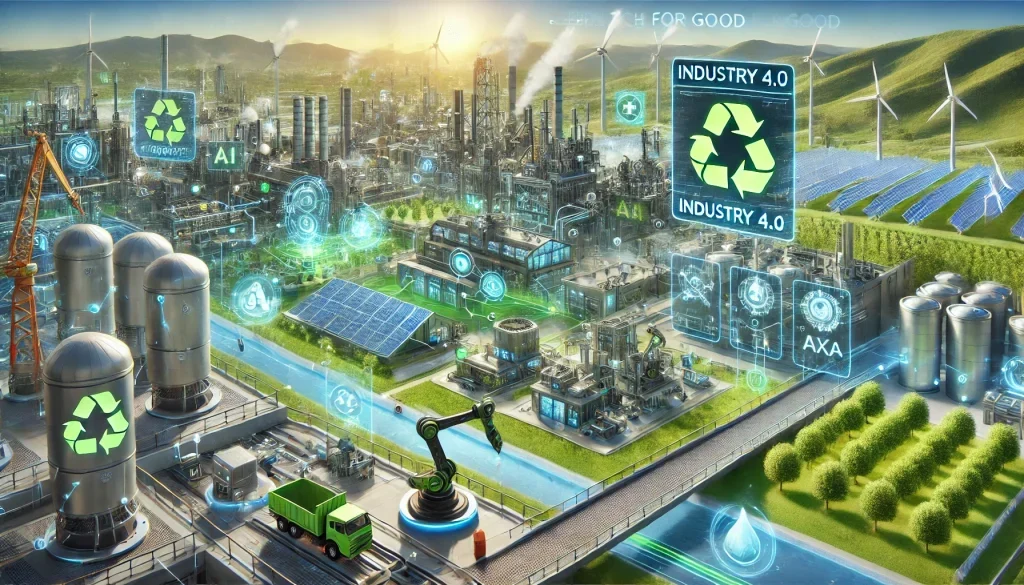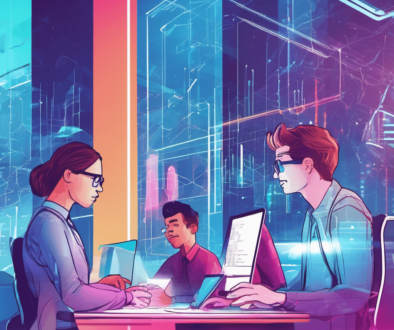What is Industry 4.0
What is Industry 4.0?
A Comprehensive Guide to the Fourth Industrial Revolution
The term Industry 4.0 has evolved in recent years, signaling a significant shift in how businesses across all sectors operate. But where does it come from, and how is it reshaping industries worldwide? Let’s dive into the origins, fundamentals, and key concepts of Industry 4.0 and explore how it’s being applied across diverse sectors to drive innovation, efficiency, and competitiveness.
Where Did Industry 4.0 Come From?
Industry 4.0, also known as the Fourth Industrial Revolution, originated in Germany around 2011. It was first introduced as a strategy to enhance the competitiveness of the manufacturing industry by integrating advanced technologies into production systems. The term was coined in the context of the Hannover Messe (the world’s largest industrial technology trade fair), and it represented the next phase in industrial development after the following revolutions:
- First Industrial Revolution (18th-19th Century): Mechanization through steam engines and water power.
- Second Industrial Revolution (Late 19th-20th Century): Mass production powered by electricity.
- Third Industrial Revolution (Late 20th Century): The rise of electronics, IT systems, and automation.
Industry 4.0 is a natural progression, emphasizing the digital transformation of industries by connecting physical and digital systems to create smart factories and processes. It revolutionized manufacturing and quickly expanded its applications across nearly every sector.
The Fundamentals of Industry 4.0
At its core, Industry 4.0 is about leveraging digital technologies to enable automation, data exchange, and intelligent systems across industries. The following fundamentals are key to understanding how this transformation works:
- Cyber-Physical Systems (CPS): These are systems that integrate digital technologies with physical processes. For example, sensors and IoT devices collect real-time data from physical machines and feed it into digital systems for analysis, allowing for better decision-making.
The Internet of Things (IoT): IoT connects devices, machines, and systems to the internet, allowing them to communicate and share data autonomously. - Big Data and Analytics: Industry 4.0 depends on large datasets gathered from connected systems, which are analyzed to optimize operations, improve efficiency, and predict future trends.
Automation and Robotics: Machines and robots powered by AI can automate repetitive tasks, improving productivity and reducing human error. - Cloud Computing: Cloud technologies provide scalable data storage and computational power, allowing companies to manage and process vast amounts of data in real-time.
- Artificial Intelligence (AI) and Machine Learning (ML): AI enables systems to learn from data, make decisions, and adapt to new conditions autonomously, further enhancing productivity and innovation.
- Additive Manufacturing (3D Printing): This technology allows for customized, on-demand production, reducing waste and enabling more flexible manufacturing processes.
How Industry 4.0 Applies to Different Sectors
While Industry 4.0 started in manufacturing, its impact has rippled through nearly every sector, transforming how businesses operate. Let’s explore how it’s applied in different industries:
- Manufacturing: This is the birthplace of Industry 4.0. In smart factories, machines are equipped with sensors and IoT devices to monitor production in real-time. Robotics and AI-driven automation streamline processes, predict maintenance needs, and reduce downtime.
- Healthcare: Industry 4.0 in healthcare brings connected medical devices, AI-driven diagnostics, and real-time patient monitoring. Telemedicine has expanded, making healthcare more accessible, while data analytics helps providers make better decisions.
Finance: The rise of Fintech is a perfect example of Industry 4.0’s impact. AI and automation streamline banking operations, offer personalized financial services, and enhance fraud detection through big data analysis. - Retail: Industry 4.0 is revolutionizing retail with smart supply chains, personalized shopping experiences through AI, and data-driven insights into customer behavior. Automated warehouses and inventory management are becoming the norm, improving efficiency and reducing costs.
- Logistics: In logistics, Industry 4.0 technologies like IoT and AI enable real-time tracking of goods, optimize supply chain processes, and automate tasks in warehouses, creating smart logistics systems that are faster, safer, and more efficient.
- Energy: The energy sector benefits from smart grids powered by AI and IoT, which optimize energy consumption, reduce waste, and allow for real-time monitoring of power distribution.
- Agriculture: Precision agriculture uses drones, sensors, and AI to monitor crops, optimize resource usage, and increase productivity. This data-driven approach is revolutionizing how food is grown and harvested.
- Construction: In the construction industry, smart construction integrates technologies like 3D printing, drones, and AI to improve project planning, reduce costs, and ensure safety on-site.
- Education: Smart classrooms are emerging, where AI and digital tools personalize learning experiences, making education more adaptive and accessible. Online learning platforms further extend the reach of quality education.
- Government: Smart cities use Industry 4.0 technologies to enhance urban infrastructure, manage resources efficiently, and provide citizens with improved services. Digital governance systems streamline administrative processes, offering better public service delivery.
Key Concepts Driving Industry 4.0
Several key concepts power the Industry 4.0 revolution, pushing industries toward a smarter, more connected future:
- Interconnectivity: The ability of devices, systems, and machines to communicate and share data seamlessly through IoT and CPS.
- Real-time Data: The constant flow of information enables faster, data-driven decision-making.
- Automation: The integration of AI, robotics, and machine learning to automate complex processes, reducing human intervention.
- Decentralization: Systems that can make decisions autonomously at the local level, without relying on centralized control.
- Digital Twin: A virtual representation of a physical object or process, used for monitoring and simulation to improve efficiency and performance.
The Future of Industry 4.0
As Industry 4.0 technologies continue to evolve, we will see even more industries and sectors embracing this digital transformation. The integration of AI, IoT, 5G, and blockchain will continue to fuel the future of Industry 4.0, making industries smarter, more efficient, and more capable of adapting to changing market conditions.
In conclusion, Industry 4.0 is not limited to manufacturing; it’s a digital revolution that impacts every sector, from healthcare to agriculture, by bringing intelligent, data-driven processes into the heart of business operations. It represents an opportunity for companies to leverage cutting-edge technology to stay competitive and thrive in the modern era.
Industry 4.0 is a revolutionary concept that has changed the way businesses operate and interact with their customers, suppliers, and partners. With Industry 5.0 on the horizon, it is important to understand how this next technological step will impact businesses across all industries.


